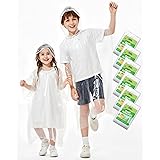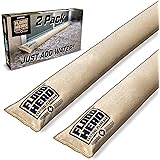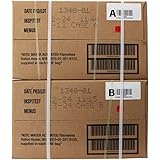Understanding Emergencies
Recognizing Different Types of Emergencies
To kick things off, let’s chat about the different types of emergencies you might face. From natural disasters like floods or hurricanes to man-made situations such as accidents or public health crises, knowing what could potentially happen is crucial. Personally, I’ve experienced a couple of emergencies, and recognizing the signs beforehand has helped me prepare better.
It’s essential not to scare anybody, but understanding that emergencies can strike at any moment is a reality check. These emergencies can impact your family, property, and even your emotional well-being. I once thought an emergency would never hit my town until that storm rolled in—boy, was I wrong!
In my experience, understanding these types of emergencies is the first step towards effective preparedness. Take some time to research and note what could affect your area. Having that knowledge is empowering and can lead to better planning down the line.
Creating a Family Communication Plan
Once you know the possible emergencies, it’s time to create a family communication plan. This is where you get everyone on the same page. Discuss as a family where to meet if you can’t return home and how to check in with one another. Trust me; a little planning goes a long way!
One thing I like to do is keep a list of important phone numbers in a shared location—a group chat, family website, or even good old-fashioned paper! It’s super handy to have these at your fingertips. When those adrenaline levels spike, your mind might just go blank!
Don’t forget to practice your plan regularly! Gathering everyone for a fun “emergency drill” not only reinforces your plan but helps alleviate anxiety about the unknown. Your kids will remember a family fun night, and you’re creating positive memories while preparing, which is a win-win.
Educating the Family
Education is key in emergency preparedness. I’ve witnessed firsthand how vital it is for every family member to understand what roles they play during an emergency. Put simply, knowledge is power! Educate your kids about emergency situations in a way that resonates with them—think of creative games or engaging visuals.
Another aspect of education is knowing how to operate emergency tools—like fire extinguishers or what to do in case of a power outage. It’s all about teaching them to think critically and act swiftly. I remember teaching my child how to call 911 and being astounded at their sudden sense of responsibility.
== > What if ... Get a FREE Subscription to PREPARE
Encourage discussions regarding fears and anxieties, too. By addressing these feelings openly, we can help our kids feel more secure and ready to face any situation as it arises. It’s about fostering an environment of support and understanding.
Storing Emergency Supplies
Basic Supplies to Gather
When it comes to emergency supplies, you can’t just throw a few cans in a backpack and call it a day. Start with the basics: water, non-perishable food, first aid supplies, and essential medications. The American Red Cross states you should aim for at least a three-day supply. I like to rotate my supplies every few months, so they’re always fresh!
Let’s not forget the importance of comfort items. Think about cozy blankets, games, and even extra pet food if you have furry family members. The idea here is to be prepared but also maintain a sense of normalcy during unsettling times.
Lastly, keeping all this in a single location will save you a lot of stress when the time comes to grab and go. I’ve got a dedicated storage tub in my home that keeps all our supplies centralized. It’s a lifesaver when the chaos hits!
Maintaining Your Emergency Kit
You can’t just pack your emergency kit once and forget about it! Regularly checking to replace expired items and ensure everything is stocked up is essential. I make it a ritual to go through our kit every six months. It keeps me sane, and ensures I’m always ready for whatever might come our way!
In addition to food and water, consider battery-powered or hand-crank devices like radios and flashlights. These often don’t get the deserving monthly check-ups, leading to unpleasant surprises. I’ve had a flashlight die on me right when I needed it the most during a blackout!
Involve your family in this process; it’s a great way to bond. Plus, your kids can take ownership of specific items. This way, when it comes to an emergency, they’ve already had practice and feel empowered to act.
Planning for Special Needs
Emergency preparedness isn’t one-size-fits-all, especially if you have family members with special needs. Take a moment to think about any specific health care needs, mobility issues, or sensory sensitivities. Consider creating personalized plans to ensure everyone is taken care of.
Get Preparedness and Self-Reliance Tips. Subscribe Now!
Communication aids may be essential for those who may struggle during stressful scenarios. I once learned that having a visual timetable for my differently-abled family member made all the difference when we practiced our emergency drills.
It’s vital to stock up on any specific medications or medical devices needed. Sometimes these requirements are overlooked, but I’ve found companies that provide kits tailored for unique circumstances. Your family’s peace of mind is worth every bit of effort!
Drilling and Practicing Emergency Procedures
Making Drills Interactive
Now that you’ve laid down the groundwork, it’s time to make drills a part of your routine. The key here is to ensure they’re not just a boring lecture but rather an engaging activity. Sometimes, we’d turn our drills into a fun competition to see who could grab an emergency bag the fastest!
Your kids may respond better if you roleplay different scenarios. Get creative with set-ups to highlight what to do during earthquakes, fires, or a tornado warning. Using props or turning it into an adventure story can really get the juices flowing.
With each drill, check in with family members about their feelings. Anticipating how they’ll react when real life happens helps you tailor your plans further, ensuring emotional preparedness along with physical readiness.
Evaluating and Adjusting the Plan
After putting your plan into action, it’s crucial to review and evaluate how things went. Learn from the experience and adjust accordingly. Have family meetings to discuss what worked and what felt off. I find this to be a collective bonding experience!
If specific roles weren’t clear during drills, clarify them for next time. It’s all about open communication, and I’ve often had my kiddos express ideas that made our plan better. Never underestimate the wisdom of a child!
Finally, document these adjustments. As time goes on, I’ve found creating a digital or physical binder for tracking all of our emergency plans and drills has been priceless, solidifying what works best for our family.
Remembering Mental Wellness
Lastly, always keep mental wellness in mind during emergencies. The mental toll that comes with facing disasters can be heavy, so finding ways to encourage discussions about feelings is indispensable. I encourage family members to express their concerns openly without fear of judgment.
After our drills, we often spend some time talking about the emotions that surfaced. Sharing with each other helps us better understand how to support one another during real emergencies, which can be really therapeutic.
Being there for one another and fostering a culture of openness can help build a stronger, more resilient family unit. Remind everyone that it’s okay to have strong feelings and that during that time, family is the safety net we all need.
Frequently Asked Questions
What kinds of emergencies should I prepare for?
It’s best to consider both natural disasters (like storms and floods) and man-made emergencies (such as power outages or public health crises). Examining the history of your area can also provide insight into what may come up.
How often should I check my emergency kit?
I recommend checking your emergency kit at least twice a year. This allows you to replace any expired items and ensure everything is ready to go. Make it a family fun activity!
What supplies are absolutely essential?
Your kit should include water, food, first aid supplies, medications, and important documents. Other items, like clothing, comfort items, and tools, can be added based on your family’s unique needs.
How do I keep everyone calm during drills?
Make the drills an engaging experience! Use role-playing, set challenges, or even turn it into a game. Openly discussing everyone’s feelings and making it fun will help minimize any anxiety.
Why is mental wellness important in emergency preparedness?
Emergencies can be stressful and overwhelming. Acknowledging and discussing emotions surrounding these situations strengthens family bonds and helps everyone feel supported, ultimately leading to a more prepared unit.






